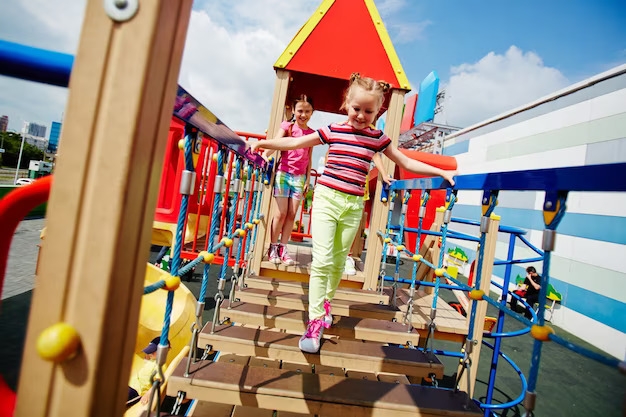Physical development is a cornerstone of early childhood education, and incorporating movement education into the preschool curriculum is essential for fostering the holistic growth of young learners. Movement not only contributes to the development of fine and gross motor skills but also enhances cognitive, social, and emotional facets of a child's development. This essay explores key strategies for integrating movement education into preschool activities, providing a roadmap for educators and parents to create an environment that promotes physical well-being in these crucial formative years.
Understanding the Importance of Movement Education:
Before delving into specific strategies, it's crucial to recognize the significance of movement education for preschoolers. Movement is the primary medium through which young children interact with and learn about the world around them. By engaging in physical activities, preschoolers develop coordination, balance, and strength, laying the foundation for more complex physical skills later in life. Moreover, movement fosters cognitive skills, social interaction, and emotional regulation, contributing to a well-rounded educational experience.
Incorporating Gross Motor Activities:
Gross motor activities play a pivotal role in movement education for preschoolers. These activities involve the use of large muscle groups and help children build strength, coordination, and spatial awareness. Simple exercises like jumping, hopping, skipping, and crawling not only promote physical health but also enhance the development of fundamental motor skills. Outdoor play areas with climbing structures, balance beams, and open spaces provide ample opportunities for preschoolers to engage in these activities and refine their gross motor abilities.
Integrating Fine Motor Skills Development:
In addition to gross motor activities, it is crucial to incorporate exercises that focus on fine motor skills. Fine motor skills involve the coordination of small muscle groups and are integral for tasks such as writing, buttoning, and grasping objects. Activities like threading beads, cutting with safety scissors, and finger painting contribute to the refinement of fine motor skills, preparing preschoolers for the more intricate tasks they will encounter in later stages of their education.
Infusing Movement into Academic Learning:
Movement education need not be confined to designated playtime; it can be seamlessly integrated into academic learning. Incorporating movement into lessons not only makes learning more engaging but also reinforces educational concepts. For instance, turning a counting activity into a hopscotch game or incorporating dance to teach the alphabet can make learning a dynamic and enjoyable experience. This approach not only aids in physical development but also enhances cognitive understanding.
Creating a Sensory-Rich Environment:
A sensory-rich environment is conducive to movement education. Preschool classrooms should offer a variety of textures, surfaces, and equipment that invite exploration and movement. Mats, cushions, and flexible seating options provide comfort and encourage children to move freely. Sensory bins filled with materials like rice, sand, or textured objects add a tactile dimension to the learning environment, stimulating both the sense of touch and motor skills.
Read more : The Benefits of Early Childhood Education: Why Preschool Matters
Preschool Recommendation:
When selecting a preschool for your child, consider one that prioritizes movement education. A preschool that recognizes the importance of physical development and incorporates movement into its curriculum provides an enriching environment for young learners. Look for institutions that offer well-equipped play areas, diverse physical activities, and a curriculum that seamlessly integrates movement into both play and learning. Such preschools contribute to the overall growth and well-being of children by fostering a love for physical activity from an early age.
Montessori Shir-Hashirim Los Angeles
Shir-Hashirim Montessori school has two different locations. The main location is on Carlton Way in Los Angeles. This school teaches children between the ages of 2 and 6 and prepares them for some of the top Montessori elementary schools in the city. Specifically, they offer a primary program and a summer program for preschool children.
At Shir-Hashirim, they allow their students to grow and learn both individually and within the community of the school. Students are able to learn at their own pace when it comes to both practical life skills and subjects such as math and language.
Shir-Hashirim Montessori has a parent-and-me program that is required for families who may enroll their child in the Montessori program.
Conclusion:
In conclusion, integrating movement education for physical development in preschoolers is a multifaceted approach encompassing gross and fine motor activities, the infusion of movement into academic learning, and the creation of a sensory-rich environment. By recognizing the importance of movement in early childhood development and implementing these strategies, educators and parents can contribute to the physical, cognitive, and social well-being of preschoolers. Embracing movement as a fundamental aspect of education sets the stage for a lifetime of physical health and a positive relationship with learning.


